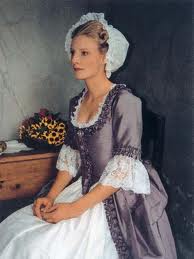 Online Women’s Clothing evolved continuously from ancient times to present days. Apart from offering coed Women’s clothing evolved continuously from ancient times to present days. Apart from offering comfort and protection against the weather elements, clothes are closely connected to the wearer’s personality, occupation, ethnic background, religion, and social status. Women’s clothing passed through a lot of changes over the centuries, keeping the pace with the evolution of the woman’s condition in the human society.
Online Women’s Clothing evolved continuously from ancient times to present days. Apart from offering coed Women’s clothing evolved continuously from ancient times to present days. Apart from offering comfort and protection against the weather elements, clothes are closely connected to the wearer’s personality, occupation, ethnic background, religion, and social status. Women’s clothing passed through a lot of changes over the centuries, keeping the pace with the evolution of the woman’s condition in the human society.
Comfort and protection against the weather elements, clothes are closely connected to the wearer’s personality, occupation, ethnic background, religion, and social status. Women’s clothing passed through a lot of changes over the centuries, keeping the pace with the evolution of the woman’s condition in the human society.
Women’s clothing during the ancient times
The Egyptian women used to wear linen and cotton colorful dresses complemented with golden and silver jewelry, in the case of rich women, or copper and bronze bracelets and necklaces worn by the poor ones. The famous queen Nefertiti is represented in many drawings wearing beautiful garments made of sheer and pleated linen. The popular Greek garment called peplos, was made of woolen cloth rectangles folded and fixed together. The peplos was tied on the woman’s waist and had large holes for head and arms. The women from Rome were famous for their elegance. Beside wool and linen, their long dresses were also made of silk and cotton.
The women’s fashion in the Middle Age
During the 12th and the 13th centuries, women’s clothing relied on wool or linen long tunics and dresses held with belt. The next centuries brought the silk stockings and clothes more and more elaborated for the wealthy class. If poor women had no other choice but to wear wood and linen hard wearing garments, rich women had the privilege to wear sophisticated dresses with embroideries made with silk and gold threads. The dress had two different parts: bodice (or corset) and skirt. The sleeves were fixed with laces and pins to be easily removed. The farthingale appeared at the end of the 16th century and has been in use for several decades of the 17th century. This structure made of whale bones or wood was placed under the dress to arrange the skirt into the desired shape. The hats fashion was spread all along the Western Europe. Women who could not afford one, used to wear a linen cap called coif.
The 18th century was the period of hooped petticoats worn under long dresses and bodices tighten with whale bones. In the 19th century the small waists were highly appreciated so that all women were fond of tight corsets and crinoline (a steel structure designed to confer support to skirt). Crinoline was quite similar to farthingale and played the same function. During this century the women’s clothing was enriched with a new accessory: the underwear, called drawers at the beginning. Later the women’s drawers were renamed into knickerbockers and then knickers.
Women’s clothing in the 20th and 21st centuries
Although in the early 20th century, long dresses were a must because it was unacceptable for a woman to show her legs, major changes were about to come in women’s clothing. Mary Phelps Jacob invented the modern bra in 1913, in 1925 appeared the skirt ending below knee, and in 1946 Louis Reard released the first modern bikini. Christian Dior promoted the long skirt with narrow waist in 1947, introducing the so called “hour glass” bodily shape.
Slowly but surely, Women’s Clothing Canada evolved to a feminine style, less conservative and focused on capitalizing the beauty of the woman’s silhouette. The human society moved on and so did the fashion. Women won the rights they have been deprived of for many years and this radical change was reflected in their clothes too. Short skirts, tight pants, molded dresses and sheer blouses represent the sexy trend of the 3rd millennium in women’s clothing.
References:
